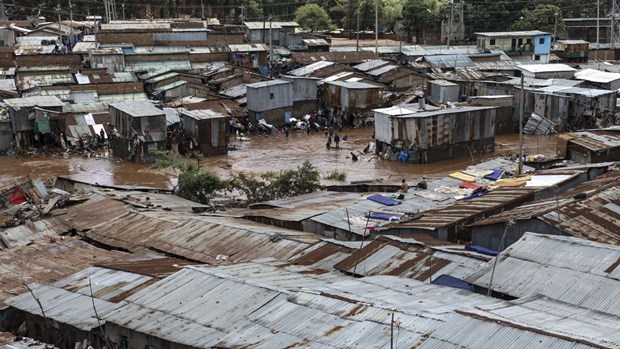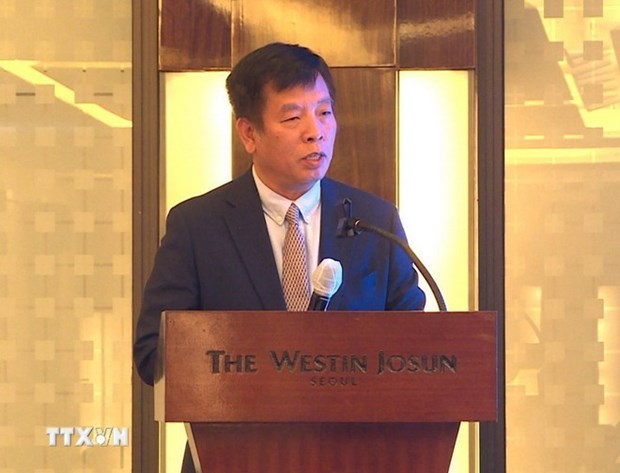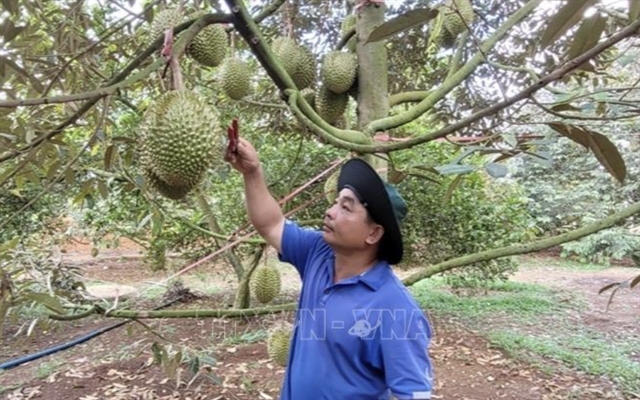 Society
Society

A doctor has devoted his life to leprosy patients in a remote hamlet in the Central Highlands province of Đắk Lắk.

|
| Dr Trần Tố checks a patient's wound. — Photo baodaklak.vn |
ĐẮK LẮK — A doctor has devoted his life to leprosy patients in a remote hamlet in the Central Highlands province of Đắk Lắk.
Trần Sỹ Tố, head of Ea Na Leprosy Treatment Department (also known as Ea Na Leprosy Camp) of Đắk Lắk Dermatology Centre in Tuôr A Hamlet of Dray Sáp Commune, Krông Ana District, is much-loved by leprosy patients and their relatives. He is considered one of the family.
It is only 20km from Buôn Ma Thuột City, but few people know that Tuor A Hamlet used to be an isolated area for a long time. Tuor A Hamlet has been renovated with kindergartens, primary and secondary schools, and medical centres, including the leprosy treatment department.
This achievement is thanks to the efforts and contributions of many generations of staff, doctors, nurses and volunteers who have silently devoted themselves to this community.
Since those difficult early days, Doctor Tố was present at the Ea Na Leprosy Camp.
Formerly a military medical soldier, he worked at the Đắk Ruê Border Guard Station in Đắk Lắk Province in 1990. With youthful enthusiasm, he wrote a volunteer application for this work and has spent most of his life with leprosy patients at Ea Na Leprosy Camp.
Over 30 years of working with abandoned lepers, Tố recounts his journey like a movie.
“In the early days, facilities were scarce, and the leprosy camp was just rows of make-shift, tattered, iron-roofed houses,” Tố told suckhoedoisong.
“With nearly 400 patients being treated in the department, I had to examine and treat 130 to 140 patients every day.”
“A group of doctors and nurses and I had to go to hamlets in forest areas across the Tây Nguyên region to track down and collect people with leprosy for the clinic as well as give information about leprosy to the community to make lepers avoid discrimination and isolation, and help them reintegrate into the community.
“There were the trips to cross Krông Ana and Krông Nô rivers by canoe to reach all the ethnic villages in remote, isolated communes of Cư Króa, Cư Prao of Đắk Lắk Province, and Quảng Tín and Quảng Trực of neighbouring Đắk Nông Province.”
There was no commune in the Central Highlands that the doctor and his colleagues had not visited.
During many trips where the propellers of the motorboat were broken and sank to the bottom of the river, Tố had to take turns with his colleagues to dive into the river to search and do repairs to continue the trips.
Many trips were in dilapidated old cars, and the medical workers had to push the vehicles when they were stuck in the mud, or the wheels were broken.
For remote hamlets that cars could not access, they had to walk and carry generators, projectors, panels, posters, and medicines on their shoulders.
There were places where he had to walk all day to get there, such as Ea Trang Commune of M'Drắk District, near the foot of Phượng Hoàng Pass bordering Khánh Hoà Province.
The medical team had to carry the equipment, wade and swim across streams to find houses. But the lepers discovered that doctors were looking for them and then fled into the forest. So, the group had to camp to stay, and Tố contacted the local authorities to call and persuade the patients to be taken care of and treated in the camp.
A patient named Thu, a street vendor in Cư Kty Commune of Krông Bông District is a typical example of those stigmatised by leprosy in the community.
When she was diagnosed with leprosy, people in the area were extremely worried and did not talk to her and buy her goods.
Tố had to go to the commune to explain that leprosy was not transmitted through eating and drinking so that people could feel secure.
There were hundreds of serious patients of all ages from all ethnic groups, abandoned by their families and villagers living in limbo and waiting to die before being treated at Ea Na Leprosy Camp, now recovered and reintegrated back into their families and communities.
Less patient, happier
Currently, only 54 patients are being cared for at Ea Na Leprosy Camp, recovering from the leprosy sequelae, 30 of whom are in severe condition and given free accommodation and meals at the camp. The rest live near the treatment area.
The medical staff has been cut from nearly 30 to just two.
Tố works as both the camp’s leader and doctor, and an Ê Đê ethnic woman named H'Rip Êban works as a nurse at the centre.
Every month, the two of them take turns on duty for 15 nights each. When H'Rip Êban is sick, Tố takes duty for the whole month.
Ea Na Leprosy Camp has become a home, and the leprosy patients are its family members.
For more than 30 years, Tố has learned to speak and understand the ethnic languages, which helps him communicate with his patients better.
Many patients overcame the disease spectacularly.
Y Rin, 50, suffered from leprosy and mental illness. When being hospitalised, his health condition was severe.
After treatment, he totally recovered, even stabilising his mental illness.
Klan Khó, a J'Rai ethnic man from Gia Lai Province, was diagnosed with squamous cell cancer of the lower leg during treatment for leprosy.
Every day, Tố encouraged him to undergo surgical treatment. Tố also promised to take care of him for life, so Klan Khó agreed to have his leg amputated, and now lives healthily.
Klan Khó said: "If it were not for doctor Tố's advice, the cancer would metastasise, and I would have died a long time ago. I am very grateful to him.”
Aside from being a doctor, Tố has also played as match-maker in the community.
Many patients became husband and wife through Tố 's matchmaking, such as Y Tlot from Hồ Hamlet and H Chíp Nie from Ea Diem Hamlet.
During treatment, Tố noticed that the two patients had feelings for each other, so he nurtured and supported their relationship and hosted a wedding for them.
The two are over 80 years old but are still able to emotionally take care of each other and are very happy.
For more than 30 years working at Ea Na Leprosy Camp, Tố has devoted his life to those in misery, sharing their joys and sorrows while cultivating happiness in the community. — VNS









